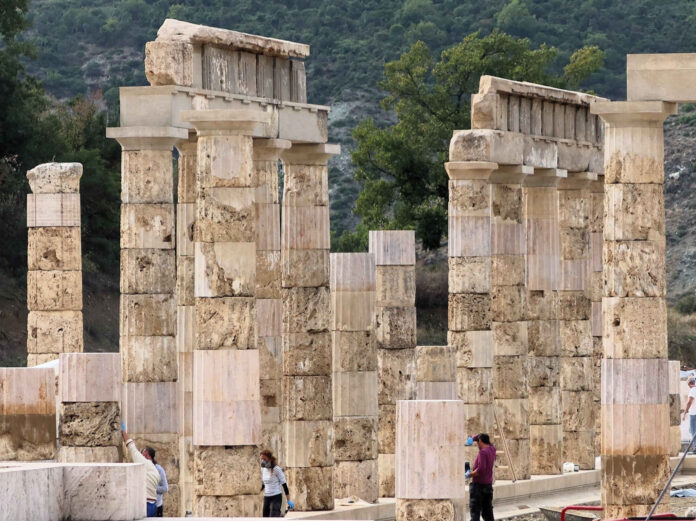The Palace of Aigai in northern Greece, an historically significant site connected to Alexander the Great, recently reopened to the public following a comprehensive 16-year renovation effort.
The restoration project, which cost over 20 million euros ($22 million) and received support from the European Union, has revitalized a structure with immense cultural and historical value.
Palace of Aigai officially reopened in northern Greece after 16-year renovation, costing EUR 20 million. #Greece / 📷 PM’s office pic.twitter.com/L0X0AHdyPr
— Derek Gatopoulos (@dgatopoulos) January 5, 2024
Spanning roughly 15,000 square meters (3.7 acres), the palace is considered the largest edifice from classical antiquity. An academic has even likened it to the “Macedonian Parthenon,” noting its size is such that the Parthenon could fit inside it three times.
Greece’s Prime Minister, Kyriakos Mitsotakis, expressed the significance of this reopening during a ceremony at the site, highlighting the global importance of the event. He emphasized the palace’s role in affirming the Greek identity of Macedonia over the centuries.
Originating from the era of Philip II, who transformed Macedonia into a major military force, the palace is renowned as the coronation site of Alexander the Great. Alexander assumed kingship at age 20, following his father’s assassination in 336 BCE. Just two years later, he embarked on his famed eastern conquests, reaching as far as what is now Afghanistan.
The inauguration of the restored palace of King Philip II, father of Alexander the Great, in #Aigai, #Macedonia, #Greece took place today in the presence of @PrimeministerGR, Kyriakos Mitsotakis. A momentous occasion of global significance. Read more ➡️https://t.co/HlnwLF6DN2 pic.twitter.com/ZF5Tof17ib
— Embassy of Greece in the US🇬🇷 (@GreeceInUSA) January 5, 2024
The palace’s architectural marvels include a grand propylon (temple entrance), a vast peristyle with 16 Doric columns on each side capable of accommodating 8,000 individuals, a dome, a library, and a smaller western peristyle for auxiliary functions.
Despite its grandeur, the palace met its demise at the hands of the Romans in 148 BC. Archaeological efforts to uncover the site began in 1865 and continued well into the 20th century. The recent restoration, initiated in 2007 with European Union backing, is anticipated to significantly boost Greece’s tourism revenue.
Palace of Aigai (359-336 BC), Macedonia/Greece
In 336 BC king Philip II was assassinated in Aigai’s theatre and his son, Alexander the Great was proclaimed king.
The Palace of Aigai is considered the most important building of Classical Greece along with the Parthenon in Athens pic.twitter.com/fqXpMCA1eq
— Greek Heritage (@greece_heritage) January 5, 2024
